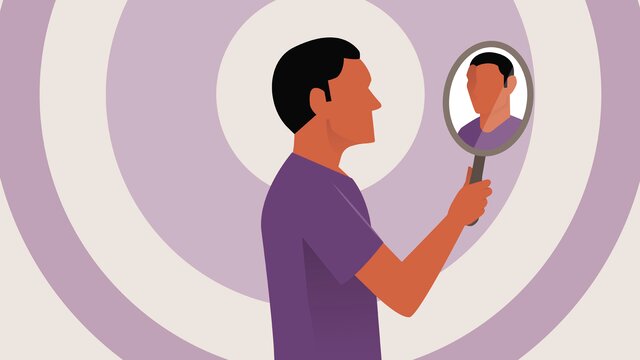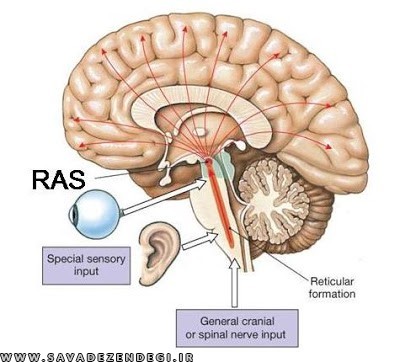
واحد مشترک کمکی پژوهش و مهندسی «هوش یار-تواندار» (HT-CSURE)
Hooshyar-Tavandar Common Subsidiary Unit for Research & Engineering
واحد مشترک کمکی پژوهش و مهندسی «هوش یار-تواندار» (HT-CSURE)
Hooshyar-Tavandar Common Subsidiary Unit for Research & Engineeringچه تصوری از خودتان در ۱۰ یا ۲۰ سال آینده دارید؟
 چه
تصوری از خودتان در ۱۰ یا ۲۰ سال آینده دارید؟ معمولاً وقتی درباره
آیندهمان فکر میکنیم، آدمی ثروتمند، خوشبخت، سالم و معروف را میبینیم.
گویی قرار است در سالهای آینده تحولی بنیادین پیدا کنیم، ناگهان درهای بخت
به رویمان باز شود و حتی صورت جسمانیمان را بهتر و زیباتر کند. در واقع،
تصویر ما از آینده خودمان چنان از پیوندهای امروزین شخصیتمان جداست که
گویی داریم یک بیگانه، یک آدمناشناس را خیالپردازی میکنیم. چرا؟
چه
تصوری از خودتان در ۱۰ یا ۲۰ سال آینده دارید؟ معمولاً وقتی درباره
آیندهمان فکر میکنیم، آدمی ثروتمند، خوشبخت، سالم و معروف را میبینیم.
گویی قرار است در سالهای آینده تحولی بنیادین پیدا کنیم، ناگهان درهای بخت
به رویمان باز شود و حتی صورت جسمانیمان را بهتر و زیباتر کند. در واقع،
تصویر ما از آینده خودمان چنان از پیوندهای امروزین شخصیتمان جداست که
گویی داریم یک بیگانه، یک آدمناشناس را خیالپردازی میکنیم. چرا؟
روزنامه «جوان» در ادامه نوشت: فیلسوف انگلیسی «درک پارفیت» در کتاب «دورانسازش دلایل و اشخاص» دیدگاهی شدیداً تقلیلگرایانه درباره هویت فردی ارائه میدهد: هویت وجود ندارد حداقل نه در آن معنایی که ما معمولاً آن را در نظر میگیریم. طبق استدلال پارفیت، ما آدمیان هویتی واحد نیستیم که در طول زمان پیش میرود، بلکه زنجیرهای از خویشتنهای متوالی هستیم که هر یک با خویشتنهای قبلی و بعدی مماس میشود و در عین حال از هر دو متمایز است. درباره پسری که شروع به سیگار کشیدن میکند به رغم اینکه میداند، ممکن است که چند دهه بعد بر اثر این عادت دچار رنج و بیماری شود، نباید قضاوتهای سختگیرانه کرد، زیرا از دیدگاه پارفیت «این پسر خود را با خویشتن آیندهاش یکی نمیداند. نگرش او به این خویشتن آینده از جهاتی مانند نگرش او به دیگران است.»
دیدگاه پارفیت حتی بین فیلسوفان نیز مناقشهانگیز بوده است، اما روانشناسان اندک اندک دارند به این حقیقت پی میبرند که شاید این دیدگاه دقیقاً نگرش ما را نسبت به تصمیمگیریهای خودمان توصیف میکند: واقعیت این است که ما به خویشتن آینده خود همچون یک بیگانه مینگریم. اگرچه ما به طرزی گریزناپذیر در سرنوشت فردی شریک خواهیم بود که یک دهه بعد، یک ربع قرن بعد یا بیشتر به آن تبدیل خواهیم شد، اما این فرد برای ما ناشناخته است. این امر توانایی ما را در انجام انتخابهای خوب از طرف آن خویشتنها که البته از طرف خودمان است، سلب میکند. آن تصمیمهای امیدبخش و درخشان را در آغاز سال نو در نظر بگیرید. اگر شما کاملاً خود را در فراموشکردن آن تصمیمها محق میدانید، شاید بدین دلیل باشد که احساس میکنید آن تصمیمها را کس دیگری گرفته است.
هال هرشفیلد، استادیار دانشکده کسبوکار استرن در دانشگاه نیویورک میگوید: «این نوعی تصور عجیب و غریب است. ما در سطح روانشناختی و عاطفی واقعاً به خویشتنِ آینده خود چنان مینگریم که گویی فردی دیگر است.»
هرشفیلد و همکارانش با استفاده از «اف. ام. آر. آی» * به مطالعه تغییرات فعالیت مغز در مواقعی پرداختند که آدمها وضعیت کنونی خود را در نظر میگیرند و به آینده خود میاندیشند. آنها به مطالعه دقیق دو ناحیه از مغز به نامهای کورتکس پیشپیشانی میانی و کورتکس سینگولیت دمی قدامی پرداختند که بیشتر هنگامی فعال هستند که فرد درباره خودش میاندیشد، تا هنگامی که به فردی دیگر میاندیشد. آنها دریافتند این دو ناحیه هنگامیکه افراد به وضعیت امروز خودشان میاندیشند، در مقایسه با هنگامیکه به خودشان در آینده میاندیشند با شدت بیشتری فعال میشوند. خویشتن آینده آنها مانند کسی دیگر احساس میشود. افرادی که بیشترین تغییر فعالیت مغزی را هنگام صحبت درباره خویشتن آینده خود نشان میدهند آنهایی هستند که با کمترین احتمال، سود مالی بلندمدت فراوان را بر سود فوری اندک ترجیح میدهند. امیلی پرونین، روانشناس دانشگاه پرینستون، در پژوهشهایش به نتایجی مشابه دست یافته است. پرونین و تیمش در مطالعهای در سال ۲۰۰۸ به دانشجویان میگویند، قرار است در آزمایشی درباره نفرت شرکت کنند که در آن باید معجونی ساخته شده از سس گوجهفرنگی و سس سویا را بنوشند. آنها به دانشجویان میگویند هرچه آنان، خویشتنهای آینده آنان یا دیگر دانشجویان بیشتر از این معجون مصرف کنند، بیشتر به سود علم خواهد بود.
دانشجویانی که به آنها گفته میشود باید این معجون نفرتانگیز را همان روز بنوشند، متعهد میشوند که دو قاشق سوپخوری مصرف کنند، اما دانشجویانی که خویشتنهای آینده خود (در ترم بعد) یا دیگر دانشجویان را متعهد به شرکت در آزمایش میکنند، میپذیرند که بهطور میانگین نیم فنجان بنوشند. پرونین میگوید ما به خویشتن آینده خود چنان میاندیشیم که به دیگران میاندیشیم: بهصورت سوم شخص.
گسستگی بین خویشتن کنونی ما و خویشتن آینده ما پیامدهایی جدی برای چگونگی تصمیمگیریهایمان دارد. ممکن است اهمالکاری را انتخاب کنیم و بگذاریم نسخهای دیگر از خویشتن ما از پس مسائل یا کارها برآید. یا میتوانیم، همانند مثال پارفیت درباره پسر سیگاری، بر آن نسخهای از خویشتن خود تمرکز کنیم که لذت میبرد و خویشتنی را که هزینه میپردازد، نادیده بگیریم، اما اگر اهمالکاری یا مسئولیتناپذیری میتواند از پیوند سست شما با خویشتن آینده خودتان سرچشمه بگیرد، شاید تقویت این پیوند راهکاری مؤثر برای این مشکل باشد. این دقیقاً شگردی است که برخی پژوهشگران دارند در پیش میگیرند. آنه ویلسون، روانشناس دانشگاه ویلفرد لوریر کانادا، ادراک افراد از زمان را دستکاری میکند: او جداولی زمانی را به آزمایش شوندگان ارائه میکند که طوری مرتب شدهاند که باعث میشود رخدادی آتی، نظیر تاریخ تحویل یک مقاله، یا بسیار نزدیک به نظر برسد یا بسیار دور. ویلسون میگوید: «استفاده از جدول زمانی طولانیتر باعث میشود که افراد پیوند بیشتری با خویشتن آینده خودشان احساس کنند.» این امر، به نوبه خود، دانشجویان را برمیانگیزد تا تکالیف خود را زودتر انجام دهند، و خویشتن پایانترم خودشان را از استرس انجام کار در دقیقه ۹۰ نجات دهند.
هرشفیلد بیشتر رویکردی مبتنی بر فناوریهای پیشرفته را برگزیده است. او و همکارانش، با الهام از کاربرد تصاویر برای برانگیختن افراد به انجام کمکهای خیرخواهانه، آزمایششوندگان را به یک اتاق واقعیت مجازی میبرند و از آنها میخواهند به یک آینه نگاه کنند. آزمایششوندگان یا خویشتن کنونی خود را میبینند یا تصویری از پیری خودشان که به روش دیجیتالی ترسیم شده است. هنگامیکه از اتاق بیرون میآیند، از آنها میپرسند که چگونه هزار دلار را خرج خواهند کرد. آنهایی که تصویر پیری خودشان را میبینند، در مقایسه با کسانی که تصویر کنونی خویش را میبینند، میگویند که دو برابر در حساب بازنشستگی خود پسانداز میکنند. شاید این خبر مهمی برای بخشی از مؤسسات مالی باشد. آلیانتس، غول صنعت بیمه، هزینه پروژهای آزمایشی را در غرب میانه امریکا میپردازد که در آن تیم هرشفیلد هنگامی که کارمندان دولتی بخشی از حقوق خود را به مستمری بازنشستگی اختصاص میدهند، تصویر پیریشان را به آنها نشان میدهند.
مریل اِج، واحد کارگزاری آنلاین بانک امریکایی مریل لینچ، این رویکرد را، بهروش آنلاین با خدمتی به نام بازنشستگی چهره پیش گرفته است. تکتک تصاویر دهه به دهه فرد در آینده با پیشبینیهای تکاندهنده هزینه زندگی و پیشنهادهایی برای سرمایهگذاری در سالهای طلایی عمر فرد همراه است. هرشفیلد هماکنون دارد درباره این امر پژوهش میکند که آیا تصاویر شبیهسازی شده میتواند به افراد کمک کنند تا وزن خود را کاهش دهند یا خیر.
البته، شیوه برخورد ما با خویشتن آینده خودمان ضرورتاً منفی نیست: از آنجا که ما به خویشتن آینده خودمان بهسان فردی دیگر میاندیشیم، تصمیمگیری ما درباره او چگونگی برخورد ما با دیگران را بازتاب میدهد. هرچند پسر سیگاری مثال پارفیت بدون هیچ فکری سلامت خویشتن آینده خودش را به خطر میاندازد، دیگران ممکن است بهروشی متفاوت عمل کنند. هرشفیلد میگوید: «حقیقت این است که ما همیشه، در روابط انسانیمان یا در ازدواجهایمان، برای دیگران ازخودگذشتگی میکنیم.» بنابراین، جنبه مثبت گسستگی ما از خویشتن آینده خودمان آن است که این امر دلیلی دیگر برای تمرین خوبیکردن به دیگران است. یکی از این دیگران هم ممکن است شما باشید.
پینوشت:
* «اف. ام. آر. آی» : تصویرسازی تشدید مغناطیسی کارکردی: در این روش تصاویری متناوب از مغز در حال فعالیت و سپس در حال استراحت گرفته میشود. سپس این تصاویر با یکدیگر مقایسه میشوند تا نواحی درگیر در یک فعالیت مغزی بهطور فیزیولوژیکی مشخص شوند.
نقل از: وبسایت ترجمان با اندکی تلخیص / نوشته آلیسا اُپار / ترجمه علی برزگر / مرجع: نوتیلوس
گفتگو باخود با صدایبلند، روشی برای تفکرخلاق و پردازش شناختی
ریشه علمی موفقیت در مغز انسان: چگونه فیلتر مغزمان را عوض کنیم؟
سواد زندگی؛ توسعه
توانمندی های فردی- در درس امروز یکی از بخش های مغز را خواهیم شناخت تا بر اساس آن، بتوانیم تحولی واقعاً جدی و مثبت در زندگی مان پدید آوریم.
شبکه
ای بزرگ از مدارهای عصبی در حد فاصل ساقه مغز و تالاموس وجود دارد که یکی
از مهم ترین اجزای بدن انسان است؛ نام این شبکه "تشکیلات مشبک" است که به
اختصار "RAS" نامیده می شود.
RAS فیلتری برای تقریبا هشت میلیون بیت اطلاعاتی است که مدام و به صورت ناخودآگاه به
سوی مغز جریان می یابند. حتی این سیستم می تواند سر و صداهای مزاحم ذهن
ما را از میان بردارد.
هنگامی که یک پیام
از فیلتراسیون RAS
گذر می کند، وارد مخ
شده و در آن جا به افکار و احساسات خودآگاه و یا هر دوی آنها تبدیل می شود؛ پس RAS به طور مختصر دروازه ورود اطلاعات به مخ است.

Rubén González نویسنده کتاب "شجاعت
موفقیت" در این باره می
گوید: مخ انسان بدون دریافت مجوز از RAS به هیچ پیامی پاسخ نمی دهد. از این رو
می توان گفت که RAS
درست مانند گوگل است؛ میلیون ها وب سایت وجود دارند که شما تنها با تایپ یک
کلید واژه خاص، انواع ناخواسته را فیلتر می کنید.
سوال مهم این است که چه پیام هایی توسط RAS
دریافت و تجزیه و تحلیل می شوند و اجازه می یابند تا به مخ بروند؟
و پاسخ مهم تر این است: فقط مواردی که
RAS
تشخیص دهد برای شما اهمیت زیادی دارند.
اما RAS از کجا تشخیص می دهد
که چه مواردی برای شما مهم هستند؟ پاسخ به این سوال بسیار حیاتی و کاربردی
است: RAS به طور مستمر، شما را زیر نظر دارد و دقت می کند که شما به چه
چیزهایی توجه و تمرکز می کنید و خودش هم نسبت به آنها حساس می شود و جذب
شان می کند.
به عنوان مثال وقتی به دنبال خرید خودروی خاصی هستید،
بیش از همیشه آن را در خیابان ها می بینید چرا که وقتی RAS متوجه می شود
که فلان خودرو برایتان اهمیت دارد، آن را نادیده نمی گیرد در حالی که قبلاً
نادیده می گرفت و شما اصلاً متوجه وجود آن خودرو در خیابان ها نمی شدید. برای آن که بتوانید
عملکرد دقیق و ارزشمند این سیستم را بررسی کنید، می توانید یک آزمایش ساده انجام
دهید: همین الان بر رنگ آبی متمرکز شوید و مغز شما بدون آن که متوجه شوید و یا حتی تلاش خاصی نیاز
باشد، در هر کنجی به دنبال آیتم هایی هرچند جزئی با رنگ آبی خواهد بود!
بنابر این اگر در حال آماده شدن برای یک سخنرانی مهم هستید RAS
تنها در حالتی اقدام به فیلتراسیون مطالب مرتبط می کند که عمده تمرکزتان را روی همین موضوع حفظ کرده باشید.
در واقع به هر چیزی که
بیشتر فکر کنید، RAS آن را مهم تر قلمداد و توجه بیشتری بدان می کند.
Rubén González می گوید: هرچه بیشتر بر اهداف خود متمرکز شوید، ضمیر ناخودآگاه نیز تلاش سخت گیرانه تری برای دست یابی شما به آنها انجام می دهد. دقیقا به همین علت است که نوشتن اهداف به صورت روزانه، تجسم نتیجه مورد انتظار و تمرکز ذهنی منظم بر آنها بسیار اثرگذار خواهد بود چرا که RAS را درگیر می کند.
مثبت نگری و منفی نگری از فیلتر RAS
اگر تصور می کنید فردی منفی نگر هستید، دلیل این موضوع
تمرکز بیشتر شما بر اطلاعات منفی است. یعنی RAS از میان انبوه اطلاعات پیرامونی تان تنها قطعات منفی از پیام های ورودی را گزینش کرده و به فکر یا احساس تان تبدیل می کند.
در مقابل اگر بیشتر زمان خود را به تفکر در مورد موضوعات
مثبت اختصاص می دهید یا اصطلاحاً به نیمه پر لیوان نگاه می کنید RAS به صورت ناخودآگاه هنگام بروز مشکلات نیز هزاران راه حل
کاربردی پیش روی تان قرار می دهد.
RAS بر اساس پارامترهای فردی فیلتر می کند
در صورتی که به جست و جوی بدی ها، موانع و مشکلات باشید، RAS هیچ گاه نمی تواند شما را به
اهداف مثبت تان نزدیک کند. در واقع با تفکرات منفی با دستان خودتان از رسیدن به آینده ای روشن جلوگیری می کنید.
روند
فیلتراسیون اطلاعات، کیفیت زندگی هر فرد تا پایان عمر او را شکل می دهد و
تمام بخش
های اساسی حیات را به تسخیر خود در می آورد. به عنوان مثال وضعیت اقتصادی
را در
نظر بگیرید: چرا برخی افراد با وجود تلاش زیادی که می کنند، به موفقیت مالی
قابل
توجهی دست نمی یابند؟ عمده این افراد در اعماق
ناخودآگاه خود، ایمان و باور دارند که نمی توانند تبدیل به شخصی ثروتمند
شوند. از این رو، RAS هم موقعیت های مناسب برای پیشرفت را نادیده می گیرد و
به مخ راه نمی دهد.
البته منکر واقعیت های بیرونی نیستیم و در این درس، صرفاً موضوع را از منظر RAS بررسی می کنیم.
باید بدانیم که ما خودمان سازنده محدودیت هایی هستیم که در
زندگی تجربه می کنیم . همانطور که گفته شد این محدودیت ها با افکاری
که در ناخودآگاه ذهن نهادینه می شوند، ساخته خواهند شد و RAS نیز آنها را مرتبا تایید خواهد کرد. به همین دلیل اگر به دنبال یک
زندگی توام با آرامش و موفقیت هستیم، باید سیستم RAS را تحت کنترل خود
درآوریم. نحوه این کار نیز بسیار ساده است! تنها لازم است روی مسائلی متمرکز شویم
که می خواهیم به آنها برسیم.
RAS
سیستمی تمرین پذیر است و نمی توان انتظار داشت که ظرف مدت زمان یک شب، این بخش از
مغز حیاتی منحصر به فرد را برای شما رقم بزند. باید به مرور تمرین پذیری RAS را افزایش دهید و کمی در این مسیر
صبور باشید.
"هر چیزی که آن را به طور ثابت در ذهن خود نگه دارید، دقیقا تبدیل به همان تجربیات شما در زندگی می شوند" این جمله ای معروف از آنتونی رابینز اسطوره انگیزه، نویسنده، سخنران و مربی آمریکایی است.
زمانی که این کار را به طور مداوم و طی مدت زمانی طولانی
انجام دهید، کم کم فیلترهای قدیمی RAS
مغز خود را با فیلترهایی بسیار قوی تر جایگزین خواهید کرد که می توانند موفقیت شما
در مراحل مختلف زندگی را تضمین کنند.
بر اساس مطالعات Michael Merzenich عصب پژوه آمریکایی با 30
ساعت تمرین مشخص طبق تکنیک های عصب شناسی، می توان به حافظه، عملکردهای شناختی،
الگوهای کلامی، خوانش و حتی قابلیت های RAS
قوت بخشید. بنابراین کافی است یک ساعت در
روز به مدت یک ماه مسیر زیر را دنبال کنید. قطعاً بعد از کسب نتایج حیرت
انگیز این تمرین ها، آنها را تا آخر عمر ادامه خواهید داد و لذت خواهید
برد:
- مدیتیشن و یوگا : حتماً در یک کلاس ثبت نام کنید یا اگر دسترسی ندارید بکوشید با استفاده از اینترنت یا کتاب های معتبر، مدیتیشین و یوگا را بیاموزید و انجام دهید.
- تغذیه حاوی مقادیر مناسب از امگا 3 و اسیدهای چرب ضروری: سرچ کنید و ببینید چه غذاهایی حاوی این مواد هستند.
- نوشتن واژه ها، عبارات و جملات مثبت مرتبط با اهداف شخصی: دفترچه ای داشته باشید و در آن اهداف و توانمندی هایتان را با جملات کاملا مثبت بنویسید و مدام بروز کنید و بخوانید.
- تکرار کلامی هدف هر روز صبح و شب: هر روز، اهداف تان را بر زبان بیاورید.
- خواب مناسب بین 6.5 تا 8 ساعت: این درس را بخوانید (کلیک کنید).
- دوری از محیط های پرتنش: هر چند سخت است ولی تا حد امکان این کار را بکنید. مثلاً چرا باید ویدئویی که حاوی صحنه های دلخراش است را تماشا کنید؟
- تصویر پردازی: خود را در جایی که می خواهید بدان برسید تصور کنید.- خواندن کتاب های انگیزه بخش: بسیاری از انسان های موفق، هر روز چند صفحه مطلب الهام بخش می خوانند. بی هیچ شعاری، واقعاً موثر است.
کشف 12 حالت مخفی در مغز

پژوهشگران هندی ۱۲ حالت ناشناخته از مغز را شناسایی کردند که به عنوان منبع و سرچشمه تمامی فعالیتهای عصبی محسوب میشوند.
به گزارش ایسنا و به نقل از تلگراف، محققان هندی موفق به کشف ۱۲ حالت در مغز شدند که تاکنون شناخته نشده بود و به اعتقاد آنها این نقاط سرچشمهای برای تمامی فعالیتهای مغزی به شمار میآید، از معماهای ریاضی گرفته تا اختلالات عصبی و روانی.
محققان هندی اظهار کردند که هرکدام از این ۱۲ حالت مخفی نشان دهنده الگوهای ارتباطی میان نقاط مختلف در قشر مغز هستند.
قشر مغز لایه نازک از جنس ماده خاکستری است که سطح مغز را می پوشاند. این لایه از سلولهای عصبی مغز تشکیل شده است. ضخامت آن در نواحی مختلف مغز متفاوت است اما تقریبا در همه جا ضخامتی بین ۲ تا ۴ میلیمتر دارد.
این حالات همچنین نقاطی کلیدی در عملکردهای ذهنی عمیق مانند تفکر و حافظه به شمار میآیند.
محققان مرکز ملی تحقیقات مغزی هاریانا به همراه چند موسسه دیگر این پروژه را پیگیری کردند ودر آن از ابزارهای رایانهای و ابزارهای تصویربرداری مغزی استفاده کردند تاهمبستگیهای قشر مغز افراد را بررسی کنند.
افراد داوطلب در این آزمایش با چشمانی بسته در یک اتاق عایق از صدا قرار گرفتند.
این محققان اتصال داخلی میان ۶۸ ناحیه از قشر بیرونی مغز را بررسی کردند و امیدوارند که یافتههای آنها بینش جدیدی از عملکرد پیچیده مغز را برای ما فراهم سازد.
یک محقق در حوزه رایانه نیز در این پروژه شرکت کرد و با استفاده از تکنیک "یادگیری ماشین" به تجزیه و تحلیل اتصالات مغزی پرداخت.
"یادگیری ماشین" یکی از شاخههای وسیع و پرکاربرد "هوش مصنوعی" است که به تنظیم و اکتشاف شیوهها و الگوریتمهایی میپردازد که بر اساس آنها رایانهها و سامانهها توانایی تعلم و یادگیری پیدا میکنند.
The Scientist Who Studied Einstein's Brain Learned That These 5 Factors Make You Smarter
We still don't completely understand how the brain works and yet we're building machines to replicate it. Our quest to create artificial intelligence has grown into a near-frenzy as we surge ahead with unprecedented progress. But will we really reach the finishing line?
Any hope of success will depend on our ability to answer one simple question: What exactly is intelligence?
In 1985, American scientist Marian Diamond studied the brain of Albert Einstein and found an answer.
Was Einstein's brain different?
We're used to talking about neurons when referring to the brain, but we also have what are called glial cells. In Greek, glia means "glue." Glial cells were given their name because we thought they did little more than just hold the brain together. One kind of glial cell is the star-shaped astrocyte.
In 1985, Diamond's findings were almost disappointing. Einstein's brain did not contain more neurons overall than the average person's. It did, however, contain more astrocytes, in the left inferior parietal area of the brain, a region associated with mathematical thinking.
Since intelligence was assigned to neurons and astrocytes were thought to be little more than "glue," this finding did not make headline news and was largely ignored.
What did Einstein's brain actually reveal?
If you insert human astrocytes into the brains of newborn mice, they grow up to be more intelligent. Their learning and memory are significantly sharper. It's only in the past few years that we've come to understand the extraordinary reason why.
We have always assumed that a synapse, the point where two brain cells join to carry information, is made up of two brain cells. We were wrong. A synapse is made of two brain cells -- and an astrocyte.
Astrocytes nurture synapses. Not only are they key in synaptic plasticity, but they are plastic themselves. They grow and change. One astrocyte can be in contact with two million synapses, coordinating their activity and plasticity across vast realms of the human brain -- and contributing to our intelligence.
How do astrocytes figure in artificial intelligence?
Artificial intelligence researchers from the University of A Coruña in Spain recently improved neural network performance by using an algorithm that included artificial astrocytes. When a neuron's activity reached a maximum, the astrocyte was activated. It increased the weight of the neuron's connections with the neurons of the adjacent layer by 25 percent, simulating what might happen in real life.
How do you increase astrocytes?
If Einstein was a genius because of his astrocytes, can we increase our astrocyte numbers and become geniuses too?
As early as 1966, Diamond and her team demonstrated that putting young rats in a stimulating environment rich with challenge and new experiences increased glial cells.
We now know that this even happens in elderly mice. Putting aged mice in an "enriched environment" increases astrocyte numbers and complexity, which correlates with better cognitive performance.
If you're wondering, the effect is also seen in humans.
A study published this year followed production workers at a factory in Germany for 17 years. The volume of brain regions associated with executive function and motivation was larger in those who had been exposed to recurrent novelty in their work. This was associated with better cognitive performance at middle age.
Plasticity takes energy and effort and our brains are lazy. They don't want to try to "grow" without good reason. Challenge and novelty tempt the brain with a reason to try.
What this means for you.
During her career as a professor of integrative biology at the University of California, Berkeley, Diamond concluded that five factors were crucial for healthy astrocytes -- and for the human brain to thrive at any age: a good diet, exercise, challenge, novelty -- and love (she noticed the mice in her lab lived longer and did better when cuddled).
Focusing on these five things can increase stress resilience and keep you mentally sharp. If you're leading a team, you may not be able to change everyone's diet and exercise routines or show love, but you can make sure your team has ample opportunities for "newness" and challenge. Minimize repetitiveness and standardization and encourage employees to learn and master new things outside of their skill set.
Astrocytes are one thread in the complex tapestry of intelligence, but our growing knowledge about astrocytes has made intelligence a little less baffling today than it was a few years ago.
When Diamond (who passed away last week) reported her findings in 1985, the overwhelming conclusion was that Einstein's brain was not much different from anyone else's. Today, we can confidently say that Einstein's brain was very different, after all.
The opinions expressed here by Inc.com columnists are their own, not those of Inc.com.


